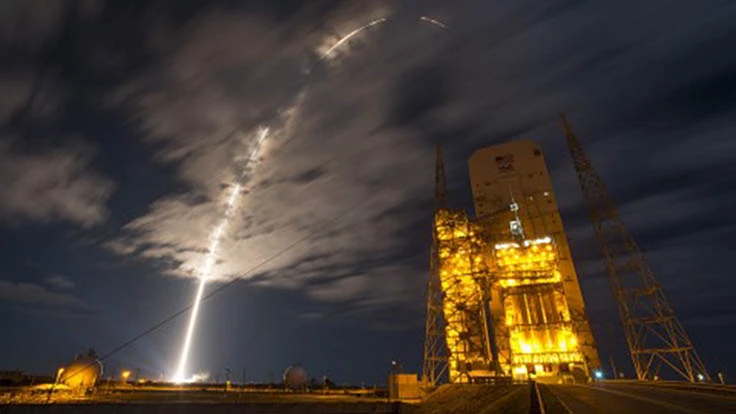
Minneapolis & Rehovot, Israel – Stratasys Ltd. supported a United Launch Alliance (ULA) Atlas V rocket, launched March 22, 2016, from Cape Canaveral Air Force Station in Florida. The Atlas V rocket flew serial-production 3D printed parts enabled by Stratasys support and technology. The 3D printed parts highlight the ability to replace metal components with 3D printed lightweight thermoplastic components.
With the aerospace expertise of ULA and Stratasys' additive manufacturing technology, numerous components were 3D printed for the Atlas V ducting system in the rocket's payload fairing. The parts include brackets, nozzles, and panel close-outs and were 3D printed in SABIC’s Ultem 9085 material on a Fortus 900mc production 3D printer. ULA credits Stratasys with assisting them in engineering, production tooling, and production parts.
For ULA, additive manufacturing solutions allowed for design flexibility and unique material properties to optimize parts that can withstand the harsh launch environment. It also resulted in substantial cost and time benefits in comparison to traditional manufacturing methods.
"Stratasys continues to be a great supplier to ULA, supporting our Atlas V and Delta IV launch vehicles. Our partnership has enabled Stratasys to bring parts such as tooling and support equipment into ULA's factory in Decatur, Alabama, to help us build rockets," said Greg Arend, ULA’s additive manufacturing manager.
"It's been impressive to see how ULA has innovated with industrial 3D printing, and we are excited to continue working with them to push the technology further," says Scott Sevcik, director of business development for aerospace & defense at Stratasys.
The Atlas V Rocket, built by ULA, is the first vehicle to adopt 3D printing for serial production of thermoplastic components.
The Atlas V rocket carried the OA-6 Cygnus resupply craft to the International Space Station (ISS). The mission was flown for Orbital ATK under NASA’s Commercial Resupply Services contract, and, with a payload of more than 16,000 lb, was the heaviest payload to launch on an Atlas V to date.
This launch used an Atlas V Evolved Expendable Launch Vehicle (EELV) 401 configuration, which includes a 4m-diameter extra-extended payload fairing.
Cygnus consists of a common service module (SM) and a pressurized cargo module (PCM). The SM is assembled and tested at Orbital ATK’s Dulles, Virginia, satellite manufacturing facility. The PCM is based on the multi-purpose logistics module (MPLM), developed and built by Thales Alenia Space of Italy.
Sources: Stratasys Ltd., United Launch Alliance
Latest from Aerospace Manufacturing and Design
- Daher inaugurates Fly'in technology center
- Baumer's ultra compact sensors
- Trelleborg Sealing Solutions acquires Magee Plastics
- Edge Technologies' FMB Turbo 3-38 RS
- A new chapter for Zagar
- Thomson' encoder option to stepper motor linear actuator online selection tool
- Look into the future of manufacturing in roundtable webinar
- Start the new year off right – get up to date with the additive manufacturing industry





